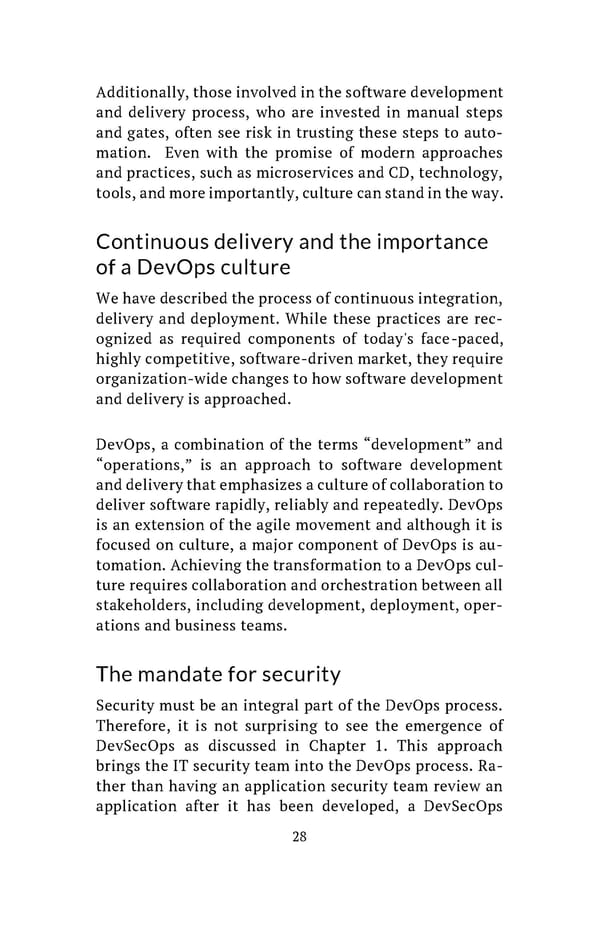Additionally, those involved in the software development and delivery process, who are invested in manual steps and gates, often see risk in trusting these steps to auto- mation. Even with the promise of modern approaches and practices, such as microservices and CD, technology, tools, and more importantly, culture can stand in the way. Continuous delivery and the importance of a DevOps culture We have described the process of continuous integration, delivery and deployment. While these practices are rec- ognized as required components of today's face-paced, highly competitive, software-driven market, they require organization-wide changes to how software development and delivery is approached. DevOps, a combination of the terms “development” and “operations,” is an approach to software development and delivery that emphasizes a culture of collaboration to deliver software rapidly, reliably and repeatedly. DevOps is an extension of the agile movement and although it is focused on culture, a major component of DevOps is au- tomation. Achieving the transformation to a DevOps cul- ture requires collaboration and orchestration between all stakeholders, including development, deployment, oper- ations and business teams. The mandate for security Security must be an integral part of the DevOps process. Therefore, it is not surprising to see the emergence of DevSecOps as discussed in Chapter 1. This approach brings the IT security team into the DevOps process. Ra- ther than having an application security team review an application after it has been developed, a DevSecOps 28
 Building Cloud Native Apps Painlessly Page 31 Page 33
Building Cloud Native Apps Painlessly Page 31 Page 33